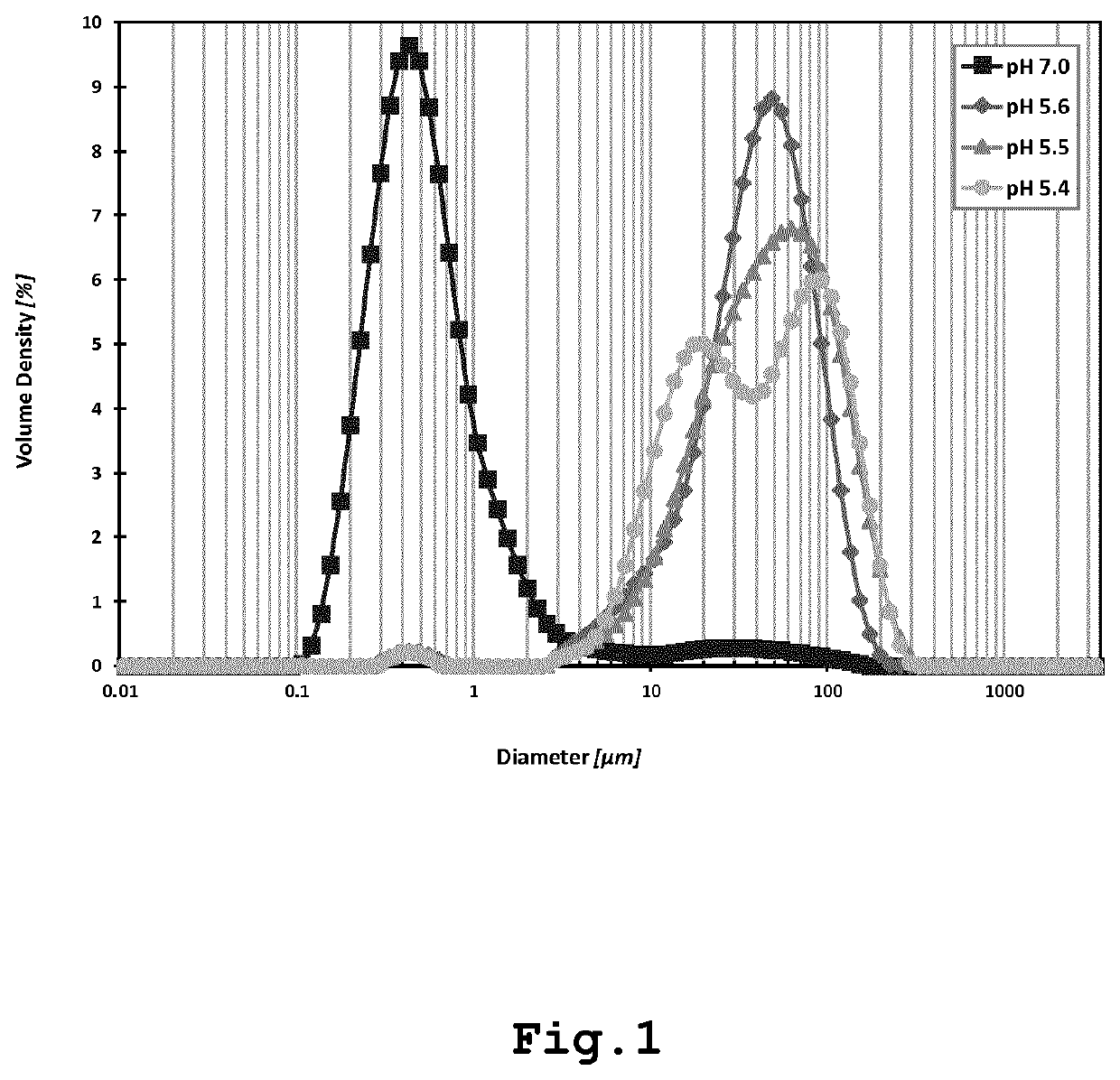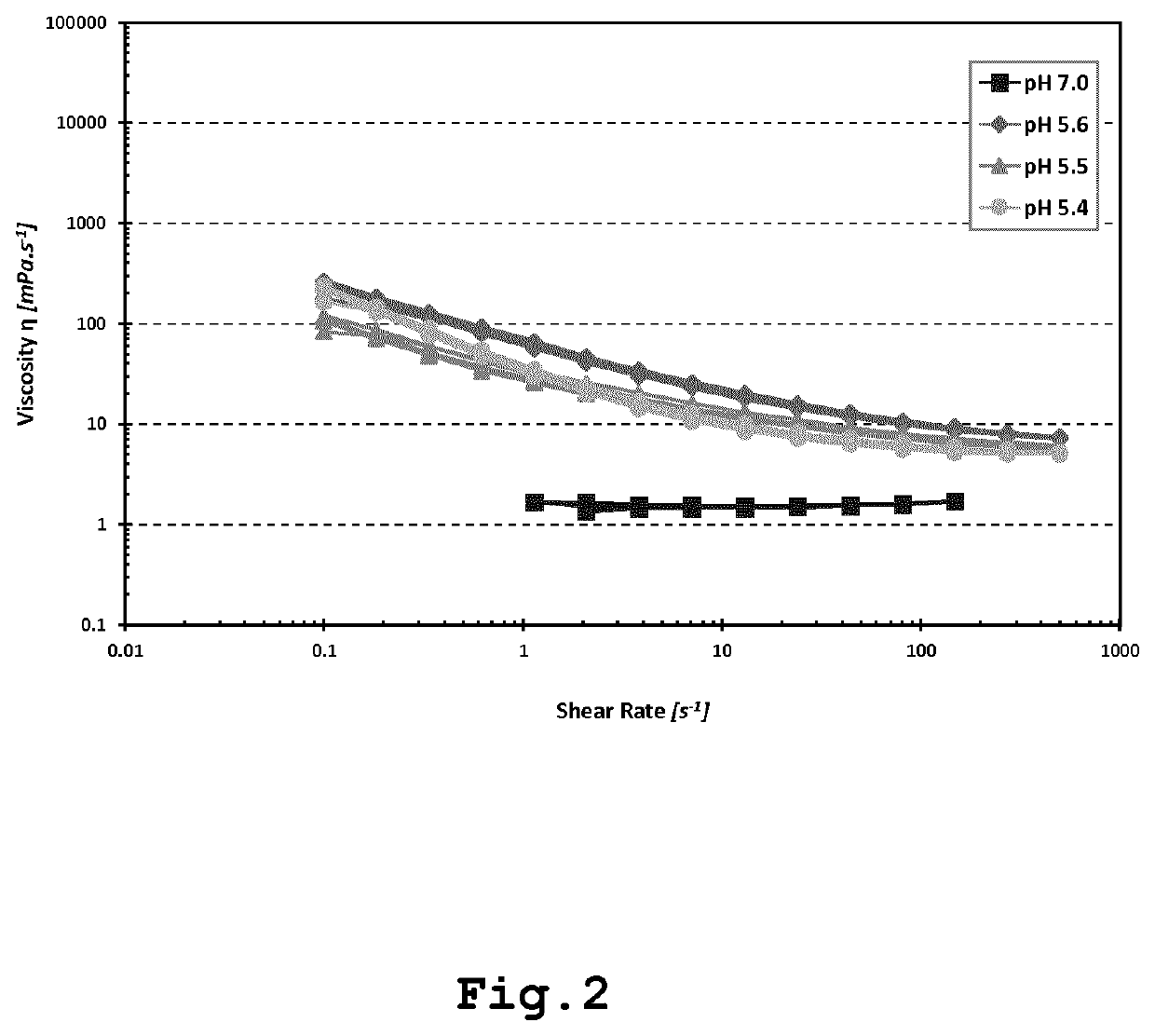Plant-protein based texturized oil-in-water emulsions
a texturized oil and plant protein technology, applied in the direction of vegetable protein working up, lipidic food ingredients, food denaturation, etc., to achieve the effect of improving the shelf life of the product, improving the texture and mouthfeel
- Summary
- Abstract
- Description
- Claims
- Application Information
AI Technical Summary
Benefits of technology
Problems solved by technology
Method used
Image
Examples
example 1
tion of Optimum pH for Obtaining Plant Protein Texturized 2.5 to 10 wt % High Oleic Sunflower Oil Emulsions Stabilized by 2 wt % Proteins
Material and Methods
[0064]Two commercial isolates of soy and pea protein were used. The soy protein isolate was Profam 974 IP from ADM (Decatur, Ill., USA) and pea protein isolate was Nutralys 85SF from Roquette Frères (Lestrem, France). The protein content in the isolates was determined by the Kjeldahl method (Nx6.25) and was 90% (on wet powder) for soy and 78% (on wet powder) for pea.
[0065]In addition, isolated globulin fractions of soy and pea were produced upon extraction from defatted flours.
Pre-Treatment of Defatted Soy
[0066]Defatted soy flour 7B IP (51% protein on wet basis) was obtained from ADM (Decatur, Ill., USA). The flour was treated during 90 minutes (gentle stirring), using distilled water (Milli-Q quality) and pH was adjusted to 7.5. The flour:water ratio was 1:15 (i.e. 900 g of water for 60 g of flour). In order to separate the res...
example 3
n of a Liquid and Powder Texturized Food Emulsion Based on Potato Protein Agglomerated at Pilot Plant
[0108]The system containing potato protein from example 2 has been produced at pilot scale to test the sensitivity of our invention to industrial conditions. However, in order to meet optimum pH conditions for potato protein isolate, the pH was set to 6.2, the NaCl to 0.25 wt % and the CaCl2 to 0.1 wt %.
[0109]The potato protein isolate used was similar to example 2, i.e. Solanic® 200 purchased from Solanic® (The Netherlands).
Preparation of Potato Samples
[0110]Potato protein dispersions at 3 wt % protein content were prepared in demineralised water. A batch of 80 kg of potato protein isolate was prepared by dispersing under mechanical stirring for 30 min 2.9 kg of protein powder in 68.9 kg in demineralised water at 20° C. in a stainless steel tank. A quantity of 0.210 kg of NaCl and 0.09 kg of CaCl2,2H2O was then added and stirring was continued for additional 30 min. The pH of the di...
example 4
n of Plant Protein-Based Emulsions
[0114]An amount of 2.5 kg of pea protein isolate (Nutralys 85SF, Roquette Frères, Lestrem, France) was added to 95 kg of water (˜8° C.) under high agitation. Next, and after 5 minutes of mixing under continuous high agitation, 2.5 kg of palm olein were added into the tank under high agitation for 5 minutes. The plant protein-based emulsion was homogenized at 200 / 50 bars, acidified at pH 6.4 using lactic acid 80%, pre-heated, UHT treated for 10 seconds at 138° C., and cooled. The plant protein-based emulsion was aseptically filled into bottles and stored at 4° C. The physico-chemical stability of the plant protein-based emulsion showed no phase separation (creaming, de-oiling, marbling, etc.) or gelation during storage and excellent stability overtime. The Instability Index is shown in FIG. 5A and the Particle Size Distribution in FIG. 6A.
PUM
 Login to View More
Login to View More Abstract
Description
Claims
Application Information
 Login to View More
Login to View More - R&D
- Intellectual Property
- Life Sciences
- Materials
- Tech Scout
- Unparalleled Data Quality
- Higher Quality Content
- 60% Fewer Hallucinations
Browse by: Latest US Patents, China's latest patents, Technical Efficacy Thesaurus, Application Domain, Technology Topic, Popular Technical Reports.
© 2025 PatSnap. All rights reserved.Legal|Privacy policy|Modern Slavery Act Transparency Statement|Sitemap|About US| Contact US: help@patsnap.com



